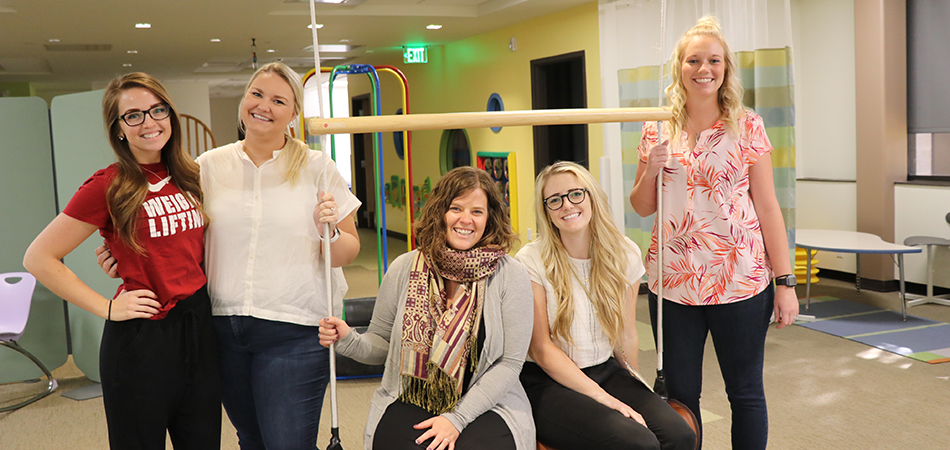In a recent trip to Morocco, five occupational therapy graduate students at the University of Utah College of Health took part in the usual tourist activities – seeing the sights, riding camels and shopping at the markets.
But most of their time was spent making their mark on the north Africa county by assisting at a rehabilitation clinic in Marrakech. At the end of their nearly two-week October visit, they had laid the groundwork for programs that will help therapists at the Moulay Ali Institute for Rehabilitation (MAIR) better serve their patients.
The U. students – McCall Halvorson, Kenzie Smith, Lexi Sybrowsky, Lindsey Ward and Caitlin Winters – also learned ways to enhance their own work by observing the Moroccan therapists. They were especially impressed by the dedicated mothers who participated in their children’s therapy.
“Watching some of the moms sit alongside the therapists and help perform range-of-motion or other tasks was incredible and it really showed me how important it is to have the family be an integral part of the therapy process,” Sybrowsky said.
The not-for-profit MAIR clinic treats patients with cerebral palsy, traumatic brain injuries, stroke and other neurological conditions. The Utah students, who made the trip at their own expense, were there to develop programs implementing aspects of occupational therapy in treatments. In addition to observing patients at the clinic, the students performed home evaluations and visited the local orphanage.
Going out into the community and learning about the local culture was particularly useful, according to Ward, who is developing a home exercise program for children with cerebral palsy.
“It helped with treatment because we got to see their homes and we got to see where they go to the grocery store, which is the markets,” Ward said. “We understood what their daily routine looks like so it’s easier to implement those aspects into treatment, rather than assuming their life with just like ours.”
A big part of that routine for Muslims was praying. Ward said observing the sequence of movements by the faithful allowed her to incorporate them into a client’s therapy to help him pray in the traditional manner.
Mo Sbai, an adjunct professor at the University of Utah School of Medicine who co-founded the clinic in 2015, said he was impressed by how quickly the students jumped into their work at the clinic and how well they interacted with the patients and therapists. He wants to establish some kind of exchange program so the visits can continue.“I believe the whole experience was a positive life changing event for the students,” Sbai said. Winters said the trip provided an incredible perspective of what occupational therapy can do across the globe.
“We have done a lot of collaborative, on-the-spot education but there is still so much that can be done,” Winters wrote in a blog that chronicled the students’ adventures in Morocco. “My hope is the clinic continues to thrive so it can keep providing services that make such an incredible impact on so many people’s lives.”
